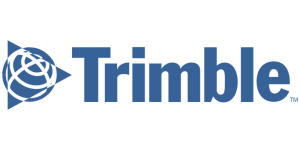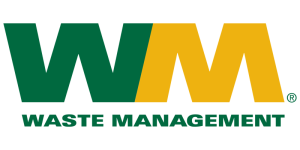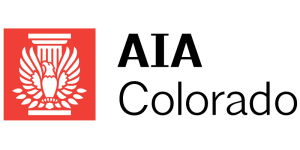What is the best practice for using SEO keywords in URL structures in 2024?
In the rapidly evolving digital landscape of 2024, the art and science of Search Engine Optimization (SEO) continue to be pivotal in determining the visibility and success of online content. As businesses compete for top spots in search engine results pages (SERPs), one critical aspect of SEO strategy that often raises questions is the best practice for using SEO keywords in URL structures. With search engines becoming increasingly sophisticated, the way a website’s URL is crafted can have a significant impact on its search rankings and user experience.
JEMSU, a leader in the digital advertising arena, has been at the forefront of implementing cutting-edge SEO techniques to help businesses thrive online. The company understands that a well-structured URL serves not just as a navigation beacon for your audience, but also as a ranking signal for search engines. In this context, JEMSU emphasizes the importance of incorporating relevant keywords into URL structures to enhance clarity and relevancy.
The best practices for using SEO keywords in URL structures are constantly being refined as algorithms evolve. JEMSU’s approach to this involves a blend of keyword research, user experience considerations, and staying abreast of the latest search engine guidelines. This ensures that URLs are not only friendly to search engines but also to the human eye, facilitating a seamless integration of digital marketing efforts that resonate with both algorithms and real-world users. As we delve deeper into the nuances of URL optimization, we explore how JEMSU’s methodologies can be applied to ensure your online presence is both robust and refined in 2024.
Instant SEO Checker + Score & Report
Enter the URL of any landing page to see how optimized it is for one keyword or phrase...
Keyword Placement in URLs
In the ever-evolving landscape of SEO, the placement of keywords within a URL structure remains a cornerstone of effective search engine optimization strategy. As we approach the year 2024, best practices continue to emphasize the importance of incorporating relevant and targeted keywords into the URL to enhance a website’s visibility and ranking potential.
When it comes to digital marketing, an agency like JEMSU understands that a URL is not just an address for a webpage, but also an opportunity for keyword optimization. Integrating primary keywords into the URL helps search engines quickly identify the topic of a page, which can significantly impact its ranking for those terms. For example, if JEMSU were to create a page about ‘digital marketing strategies’, a URL crafted as ‘www.jemsu.com/digital-marketing-strategies’ would be more effective than a nondescript or numeric URL like ‘www.jemsu.com/page-123′.
According to a study by Backlinko, which analyzed 11.8 million Google search results, URLs that contain a keyword have a correlation with higher rankings in Google. This stat underscores the significance of keyword placement in URLs as a component of SEO success. JEMSU leverages this insight to ensure that clients’ URLs are not only descriptive and keyword-rich but also optimized to meet the preferences of search engines and users alike.
Analogous to a book title that hints at the plot, a well-crafted URL with strategic keyword placement provides both users and search engines with a clear indication of the page’s content. JEMSU excels in creating URLs that act like signposts, guiding users effortlessly to their desired content, which enhances the user experience and encourages longer site engagement.
Moreover, JEMSU advocates for the use of keywords at the beginning of the URL, which tends to be more powerful than placement later in the structure. This practice aligns with the search engines’ algorithms that often attribute more weight to keywords appearing earlier in the URL. For instance, a URL like ‘www.jemsu.com/seo/keyword-placement-urls’ can be more impactful than ‘www.jemsu.com/urls/keyword-placement-seo’.
It’s important to note, however, that while keyword placement is essential, it must be balanced with URL readability. Over-stuffing URLs with keywords or creating overly complex URL structures can detract from user experience and may even be penalized by search engine algorithms. Thus, JEMSU’s approach involves a strategic and measured inclusion of keywords to craft URLs that are both SEO-friendly and user-friendly, setting a solid foundation for their clients’ online presence as we look towards 2024 and beyond.
Google Ads Success Example
The Challenge: The Challenge: Increase new dental patients with better Google Ads campaigns.
URL Length and Readability
When it comes to best practices for using SEO keywords in URL structures in 2024, URL length and readability are paramount. As a leading digital marketing agency, JEMSU emphasizes the importance of keeping URLs concise and easily understandable. The reason behind this is twofold: it benefits user experience and search engine optimization.
From a user’s perspective, a shorter URL is easier to read, memorize, and share. It’s analogous to a business card with a clear and succinct address as opposed to one cluttered with unnecessary information; the former is far more likely to be remembered and used. For example, a URL like “www.jemsu.com/seo-services” is immediately clear and indicates what the user should expect on the page, whereas a longer URL with numerous parameters and subfolders can be daunting and less inviting.
Search engines, on the other hand, favor web addresses that are clean and keyword-rich, which aids them in indexing and ranking pages more effectively. A study by Backlinko found that short URLs tend to rank better on Google than long URLs. This gives credence to the practice of refining URLs to include only the most essential keywords that align with the page’s content and purpose.
Furthermore, readability extends to the structure of the URL. It should logically flow and indicate the hierarchy of the information on the website. For instance, JEMSU might structure a URL to reflect the nesting of services under a specific category, like “www.jemsu.com/digital-marketing/seo” where ‘digital-marketing’ is the category and ‘seo’ is the specific service. This not only helps users navigate the site but also allows search engines to understand the page’s context within the broader website structure.
In conclusion, maintaining a balance between brevity and descriptive clarity in URLs is a crucial element of SEO strategy. As we assist clients in optimizing their online presence, JEMSU consistently advises on the best practices for URL length and readability to ensure that both users and search engines can navigate and appreciate the content with ease.
URL Structure and Hierarchy
The URL structure and hierarchy play a pivotal role in both user experience and search engine optimization. An organized structure with a clear hierarchy can help users understand where they are on a website and how to navigate to other pages. From an SEO perspective, a well-organized URL hierarchy allows search engines to crawl a site more efficiently and understand the relative importance of each page, which can influence ranking.
At JEMSU, we often liken a website’s URL structure to a well-organized library. Just as a library categorizes books into sections and sub-sections for easy retrieval, a website should categorize its content with a logical URL hierarchy. The main categories, or top-level pages, should be broad, with subcategories becoming more specific. This not only helps users navigate the website but also helps search engines discern the site’s content layout, which is essential for indexing.
URL structure and hierarchy also assist in establishing site architecture that supports scalable growth. For example, if JEMSU were to create an educational section on its website about digital advertising, the URL might be “www.jemsu.com/digital-advertising”. Under that section, there could be further subcategories or pages such as “www.jemsu.com/digital-advertising/seo” or “www.jemsu.com/digital-advertising/ppc”. This logical progression in URLs makes it easier for both users and search engines to follow the path of content, and understand the relationship between pages.
Statistics have shown that a clear URL structure can improve click-through rates from search engine results pages. A study by Microsoft revealed that URLs are one of the most significant elements users consider before clicking a search result. Therefore, it’s critical that businesses like JEMSUs pay attention to how their URL structures convey content and intent.
Moreover, search engines often display breadcrumbs in the search results, which are based on the URL structure. These breadcrumbs enhance user understanding of where the page sits within the site hierarchy before they even click through to the site. A URL that reads “www.jemsu.com/services/digital-advertising/seo” informs the user that the page is about SEO services under the umbrella of digital advertising, which is part of the broader ‘services’ offered by JEMSU.
In conclusion, the URL structure and hierarchy are not just a technical aspect of website design but are integral to the overall digital marketing strategy. JEMSU ensures that the URL structure for each client’s website is meticulously planned to support both the user journey and the site’s searchability, ultimately contributing to the site’s success in search engine rankings.
SEO Success Story
The Challenge: The Challenge: Design an SEO friendly website for a new pediatric dentist office. Increase new patient acquisitions via organic traffic and paid search traffic. Build customer & brand validation acquiring & marketing 5 star reviews.
Use of Hyphens vs. Underscores in URLs
When it comes to optimizing URLs for search engines, the debate between using hyphens and underscores to separate words has been settled for some time. In 2024, best practices still dictate that hyphens are the preferred method of separation within URLs. This is because search engines like Google treat hyphens as space, allowing them to easily parse individual words in the URL for indexing. For instance, JEMSU might advise a client to structure a URL as “example.com/seo-strategy-services” rather than “example.com/seo_strategy_services.”
The use of underscores, on the other hand, is not recommended as search engines tend to read words connected by underscores as a single term. This can hinder the search engine’s ability to understand and index the content, potentially affecting the page’s SEO performance. For example, a URL with “seo_strategy_services” might be interpreted as one long word, which does not match common search queries.
To illustrate the difference, consider how an English speaker naturally pauses between words. Hyphens in URLs mimic this pause, providing clear separations between terms (e.g., “seo-strategy-services”). This is akin to reading a sign with well-spaced words, as opposed to trying to decipher a phrase where all the words are run together without clear breaks.
JEMSU consistently emphasizes to clients that clarity and simplicity are key in URL structuring. Not only does this help with search engine indexing, but it also improves user experience. A URL with hyphens is easier to read and understand for users, which can increase the likelihood of clicks and shares – both of which are beneficial for SEO.
Moreover, a study by Moz suggests that URLs with hyphens are preferred by Google over those with underscores. This is based on numerous tests and search result analyses, which continue to show a positive correlation between the use of hyphens and higher search rankings. JEMSU leverages such insights to optimize clients’ digital assets effectively, ensuring that every aspect of their online presence, including URL structures, is fine-tuned for maximum search engine visibility.
Jemsu has been a great asset for us. The results have grown at strong positive linear rate. They have been extremely accessible, flexible, and very open about everything. Natalya is a star example of how to work with your accounts to drive them forward and adjusts to their quirks. Jaime is able to clearly communicate all of the work that is being done behind the scenes and make sure that all of my team is understanding.
I couldn’t be more pleased with my JEMSU Marketing Team!
Julia, Tamara, Joelle and Dally have exceeded my expectations in professionalism, creativity, organization, and turn around time with my Social Media Management project.
I have thoroughly enjoyed sharing my journey with this team of empowered women!
Thank you JEMSU! Your team designed and launched my new website, and developed strategies to drive traffic to my site, which has increased my sales. I highly recommend your Website & SEO Agency!
Jemsu has always been professional and wonderful to work with on both the SEO and website design side. They are responsive and take the time to explain to us the complicated world of SEO.
Jemsu is an excellent company to work with. Our new website blows away our competition! Unique, smooth, and flawless. Definite wow factor!
The folks at JEMSU were excellent in designing and launching our new website. The process was well laid out and executed. I could not be happier with the end product and would highly recommend them to anyone.
Jemsu is a great company to work with. Two prong approach with a new site and SEO. They totally redesigned my website to be more market specific, responsive, and mobile friendly. SEO strategy is broad based and starting to kick in. My marketing will also be adding Facebook and Google ads in the coming weeks. Thanks for your all you hard work.
JEMSU has wworked with our team to create a successful campaign including incorporating an overall rebranding of our multiple solutions. The JEMSU team is embracing of our vision and responds timely with life of our ideas.
JEMSU is great company to work with. They listen & really work hard to produce results. Johnathan & Sasha were such a big help. If you have a question or concern they are always there for you.
I would definitely recommend them to anyone looking to grow their company through adwords campaigns.
Jemsu have exceeded our expectations across all of our digital marketing requirements, and I would recommend their services to anyone who needs expertise in the digital marketing space.
JEMSU was able to quickly migrate my site to a new host and fix all my indexation issue. I look forward to growing my services with JEMSU as I gain traffic. It’s a real pleasure working with Julian and Juan, they’re both very professional, courteous and helpful.
JEMSU is incredible. The entire team Is professional, they don’t miss a deadlines and produce stellar work. I highly recommend Chris, Rianne, and their entire team.
We’ve been working with JEMSU for about five months and couldn’t be happier with the outcome. Our traffic is up and our leads are increasing in quality and quantity by the month. My only regret is not finding them sooner! They’re worth every penny!
URL Canonicalization and Duplicate Content
When it comes to SEO best practices for URL structures in 2024, a significant concern is URL canonicalization and the management of duplicate content. This aspect is particularly crucial because search engines, such as Google, aim to present users with the most relevant and unique content. Duplicate content across multiple URLs can confuse search engines and dilute the page’s ranking power. It is like having multiple doors to the same room; while they all lead to the same place, it can be unclear which door to use.
At JEMSU, we emphasize the importance of proper URL canonicalization. This practice involves selecting a preferred URL for content that is available through multiple URLs. By specifying the canonical version of a URL, you inform search engines which version of a page should be indexed and ranked. For example, if your e-commerce store has similar products with only minor differences, instead of allowing search engines to treat these as separate pages, you can use a canonical tag to point to the primary product page. This approach not only consolidates ranking signals but also improves user experience by reducing content redundancy.
Additionally, we understand that managing URL parameters is a part of addressing duplicate content issues. Parameters used for tracking and sorting can create multiple versions of the same page. JEMSU employs the use of tools like Google Search Console to communicate with search engines about how to handle these URL parameters, ensuring that they do not contribute to duplicate content problems.
As reported by a study, nearly 29% of the internet is duplicate content, which highlights the prevalence and the importance of addressing this issue. JEMSU stays at the forefront of SEO strategies by ensuring that all facets of URL management are optimized, including the correct application of canonical tags, to maintain the integrity and performance of our clients’ websites in search engine results.
SEO Success Story
The Challenge: Increase dent repair and body damage bookings via better organic visibility and traffic.
Mobile-First Indexing and URL Optimization
In the dynamic world of SEO, mobile-first indexing has become a cornerstone of effective digital marketing strategies. As of 2024, this concept is particularly relevant to how URLs are structured and optimized. JEMSU, as a forward-thinking digital advertising agency, understands the importance of ensuring that URL structures are mobile-friendly. Given that the majority of internet users now access the web via mobile devices, search engines prioritize the mobile version of a website to index and rank its content.
Mobile-first indexing means that a website’s mobile version becomes the starting point for what Google includes in their index, and the baseline for how they determine rankings. This shift has significant implications for URL optimization. JEMSU emphasizes the need for concise and clear URLs that can be easily navigated on smaller screens. URLs should be straightforward, avoiding unnecessary parameters or lengthy strings that could confuse mobile users and search engines alike.
Incorporating mobile optimization into URL structures is not just a matter of compliance; it’s about providing a seamless user experience. According to a 2023 study by the Pew Research Center, 85% of Americans now own a smartphone, a clear indication that mobile devices are the predominant portal to online content. This statistic underlines the necessity for businesses to adapt their URL strategies to a mobile-first approach.
To give an analogy, consider a URL to be like a physical address in the real world. Just like a clear and concise address ensures that a letter reaches its destination efficiently, a well-optimized URL ensures that users and search engines can find and understand a web page with ease. JEMSU helps clients to envision their website’s URL structure as a roadmap that is easily navigable, without any unnecessary detours, to provide the best user experience and support search engine indexing priorities.
For example, a mobile-optimized URL might look like this:
`https://www.jemsu.com/services/digital-marketing`
as opposed to a non-optimized, cumbersome URL:
`https://www.jemsu.com/services/index.php?category=digital_marketing&sessionid=12345&sort=alpha`
The optimized version is not only more appealing to the user but also to search engines that value simplicity and relevance in URL structures.
JEMSU’s expertise in digital advertising extends to crafting URLs that are not only SEO-friendly but also geared towards mobile-first indexing. By doing so, JEMSU ensures that its clients’ websites are positioned to perform well in search engine results, catering to the growing number of mobile users and the evolving algorithms of search engines.
FAQS – What is the best practice for using SEO keywords in URL structures in 2024?
Please note that as of my last knowledge update in early 2023, I cannot provide the absolute current best practices for 2024. However, I can share what was considered best practice as of my last update, and these practices are likely to still be relevant unless there have been significant changes in search engine algorithms or SEO theory.
1. **Should SEO keywords be included in URL structures?**
– Yes, including relevant keywords in URL structures can be beneficial for SEO as it helps search engines understand the content of the page and can also improve user experience by providing a clear idea of what to expect on the page.
2. **How many keywords should be included in a URL?**
– It’s best to include one or two important keywords that accurately describe the page’s content. Overstuffing URLs with too many keywords can appear spammy and might negatively impact rankings.
3. **What is the best way to separate words in a URL?**
– Using hyphens (-) to separate words in a URL is the best practice as it improves readability for both users and search engines. Underscores (_) are not recommended as they can sometimes be interpreted as a single word.
4. **Should I use uppercase or lowercase letters in URLs for SEO?**
– Lowercase letters are recommended for URLs because URLs are case-sensitive. Using lowercase ensures consistency and avoids confusion that may arise from mixed-case URLs.
5. **How long should my URL be for the best SEO results?**
– URLs should be kept as concise as possible while still including relevant keywords. Generally, shorter URLs are preferable as they are easier to read and share.
6. **Is it better to use subdirectories or subdomains for SEO?**
– Subdirectories are typically favored over subdomains because search engines may treat subdomains as separate entities from the main domain, which can dilute domain authority. However, there are cases where subdomains make sense, such as when hosting a blog or a different language version of the site.
7. **Should I include stop words in URLs for SEO?**
– Stop words (like “and”, “or”, “the”) are usually unnecessary in URLs and can be omitted to keep the URL shorter and more focused on the primary keywords.
8. **How do I handle dynamic URLs for SEO?**
– For dynamic URLs generated by CMS or e-commerce systems, it’s best to use URL rewriting techniques to create more user-friendly and keyword-rich static URLs.
9. **Should I include dates in URLs for SEO?**
– Including dates in URLs should be limited to content where the date is a significant aspect, such as news articles or blog posts. Otherwise, it’s not necessary and can make URLs unnecessarily long or appear outdated over time.
10. **How do I optimize URLs for SEO when restructuring my website?**
– When restructuring your website, it’s crucial to use 301 redirects to guide both users and search engines from the old URLs to the new ones. This helps in transferring the link equity and maintaining the SEO value of the pages.
Remember, while these are guidelines based on best practices that are likely to still be relevant in 2024, it’s important to stay updated with the latest SEO trends and recommendations as search engines continually update their algorithms.
SEO Success Story
The Challenge: Increase new dental patients with better organic visibility and traffic.















